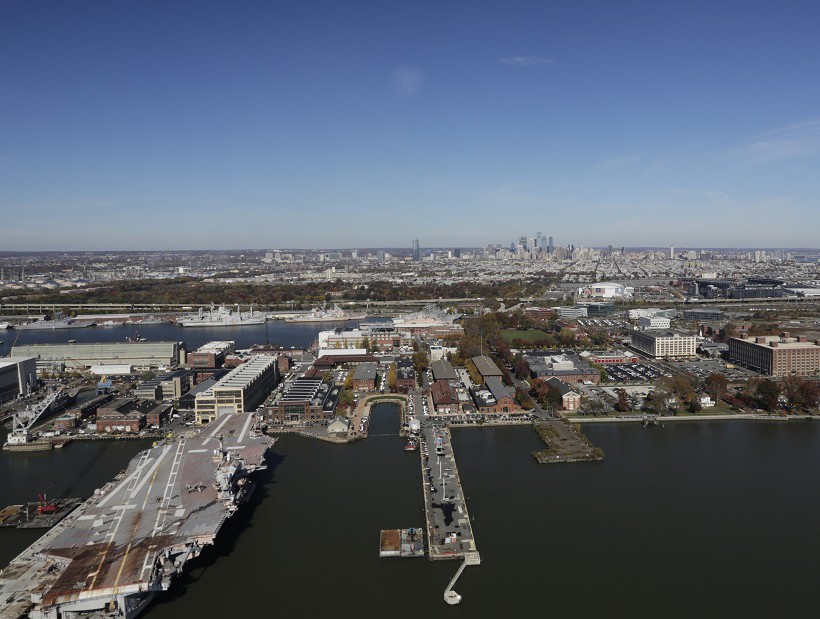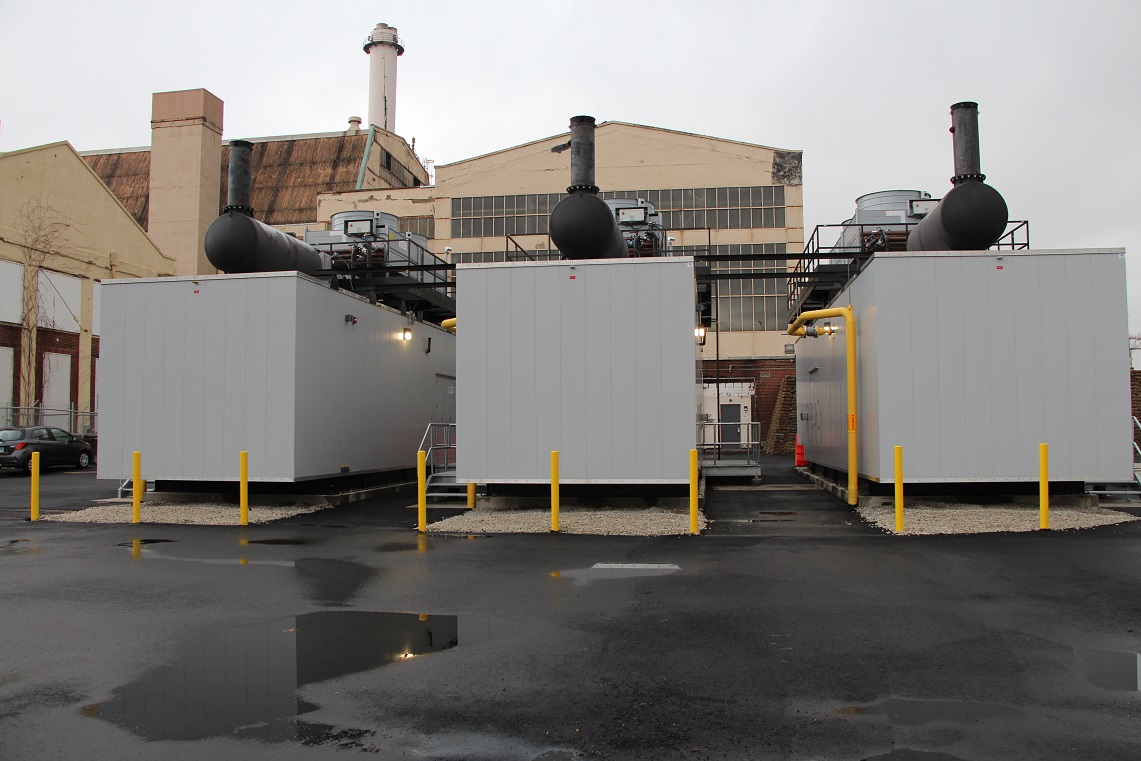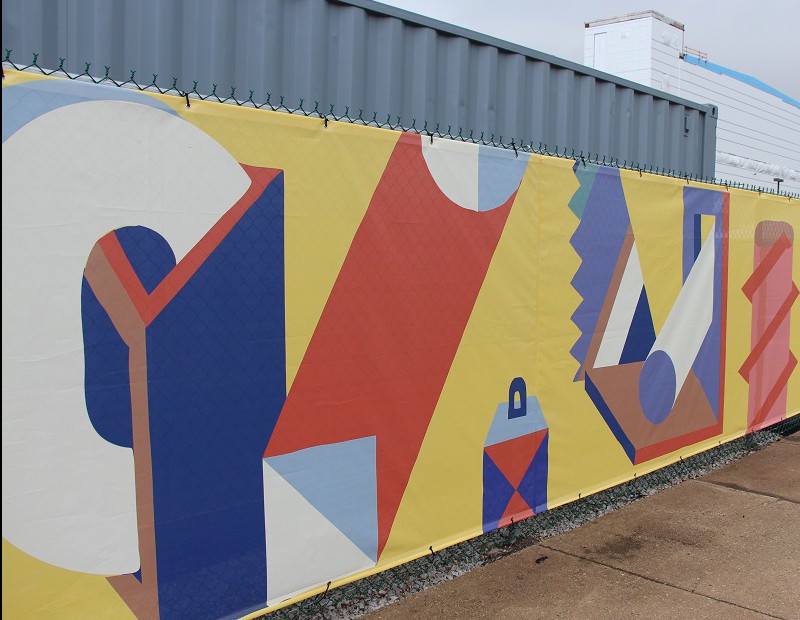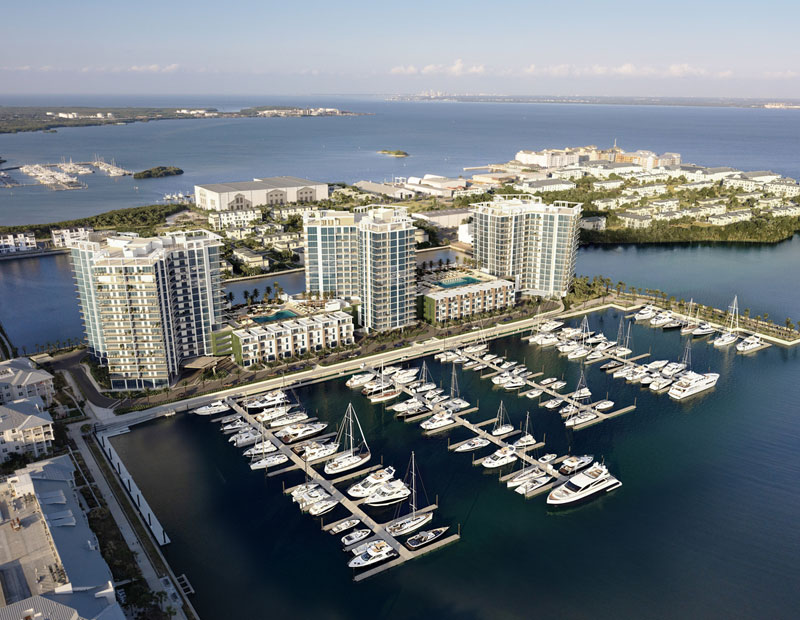Peaker Powers Navy Yard’s Growth Spurt
The 6-megawatt facility is a crucial part of the energy strategy at the 1,200-acre redevelopment of the historic Philadelphia Naval Shipyard.
By Gail Kalinoski

The Navy Yard, the 1,200-acre redevelopment of the Philadelphia Naval Shipyard, is the site of a new 6-megawatt gas-fired peaking plant.
Marking an milestone for one of the nation’s largest private microgrids, an $11 million gas-fired peaking plant is up and running at the Navy Yard in Philadelphia. The 6-megawatt facility is a crucial part of the long-term energy strategy at the 1,200-acre office and industrial development, which occupies the former site of the historic Philadelphia Naval Shipyard on the banks of the Delaware River.
“This peaking plant allows the Navy Yard to continue to develop, expand, and attract new businesses and jobs to Philadelphia; support our smart energy initiatives; and provide for greater energy security and resiliency,” explained Prema Katari Gupta, senior vice president at PIDC, in a statement late last month.
Designed, built and operated by Framingham, Mass.-based Ameresco Inc., the plant anchors a 34-megawatt electrical distribution system. Located on a small parcel—less than half an acre—in the central part of the Navy Yard’s industrial section, the facility comprises three specially designed generators. Two rooms inside an adjacent substation were renovated for a state-of-the-art operations center. A colorful installation by Nate Harris, a local artist, covers the fence surrounding the plant.

The Navy Yard’s new peaking plant provides a hedge against the volatility of the spot electricity market.
Michael Bakas, executive vice president for Ameresco, told CPE Energy Report that the peaker is a way to “future-proof” the microgrid. “Now they don’t have to worry about supply constraints,” he said.
The Navy Yard’s 7.5 million square feet of commercial space includes GlaxoSmithKline’s LEED Platinum U.S. headquarters, which opened in 2013, and Urban Outfitters Inc.’s 12-building, 575,000-square-foot headquarters, which repurposed historic structures. All told, the Navy Yard’s lineup includes 50-plus companies, some 14,000 workers, restaurants and a Courtyard by Marriott. At full build-out, it could accommodate 13.5 million square feet of development, 30,000 workers and $3 billion of private investment, officials estimate.
A key customer will be the Navy itself, which still houses several R&D and support services at the facility. At times, the Navy will be the sole customer for the 8 megawatts generated by the plant at full capacity, Terry noted.

A colorful installation by the artist Nate Harris adorns the fence surrounding the Navy Yard’s new peaker.
The plant will help meet peak demand at the Navy Yard, and will also allow PIDC to participate in the PJM Ancillary Service Market, the regional transmission market, generating generate revenues to help offset the cost of the increased capacity. PECO distributes power to the island, which has several substations; PIDC runs the microgrid, with about 70 accounts paying for power, Terry said.
Cost control is crucial because electricity purchases account for 70 percent to 80 percent of the Navy Yard’s energy expenses. The steady supply provided by the new plant provides a “physical hedge” against the fluctuations of the volatile spot market, said Rudy Terry, director of smart grid operations at the Navy Yard for PIDC. The city’s public-private economic development agency, which serves as the Navy Yard’s manager and master planner. A low-interest, bond-backed bank loan is financing the project, Terry reported.
The natural gas powering the plant is a “very clean fossil fuel that we get from the Marcellus shale reserves here in Pennsylvania,” Terry said.
Also on the way is a new substation in the facility’s northwest section. That project should be completed by September, Terry reported. On the renewable energy side, the Navy Yard also has one 400-kilowatt community solar plant and is targeting about 1 megawatt of solar capacity.
Photos courtesy of PIDC







You must be logged in to post a comment.